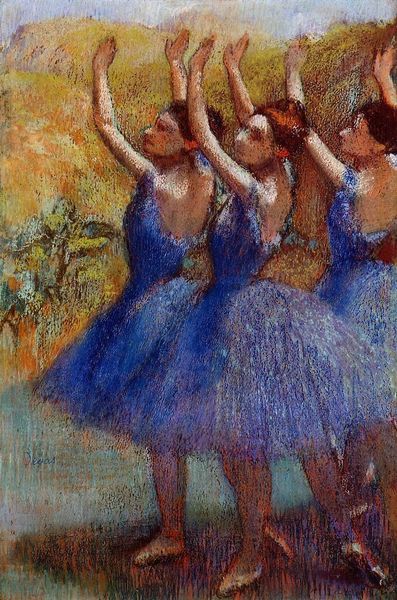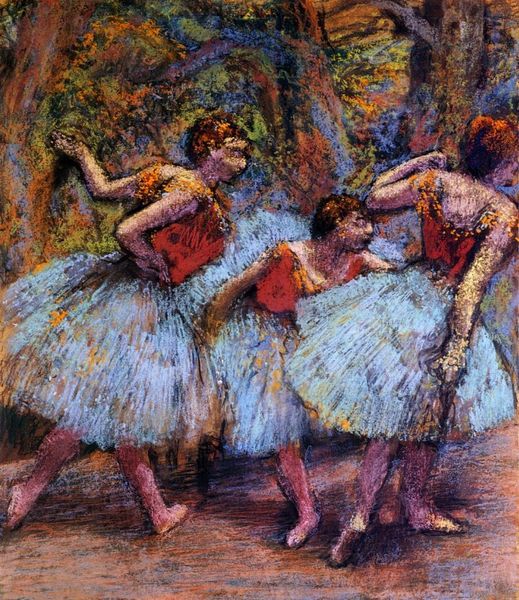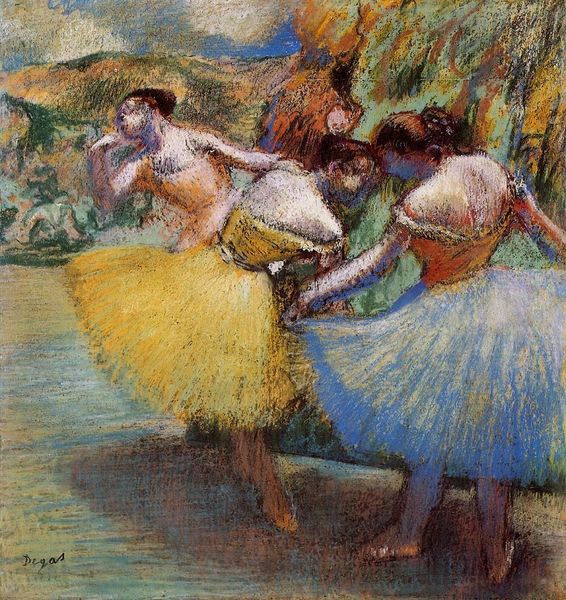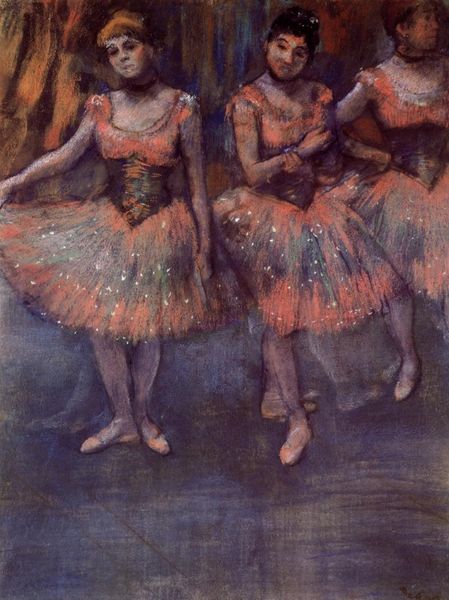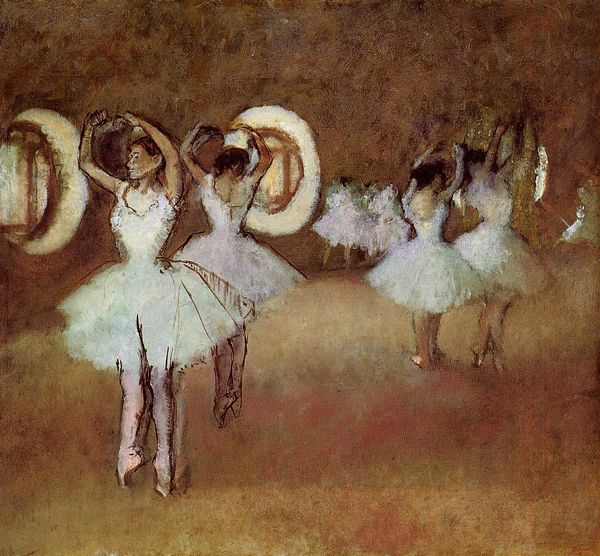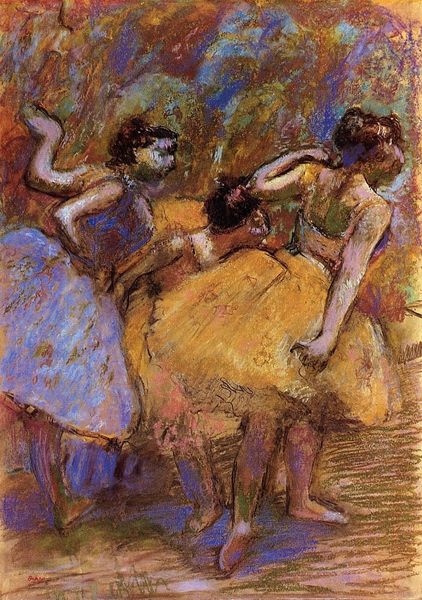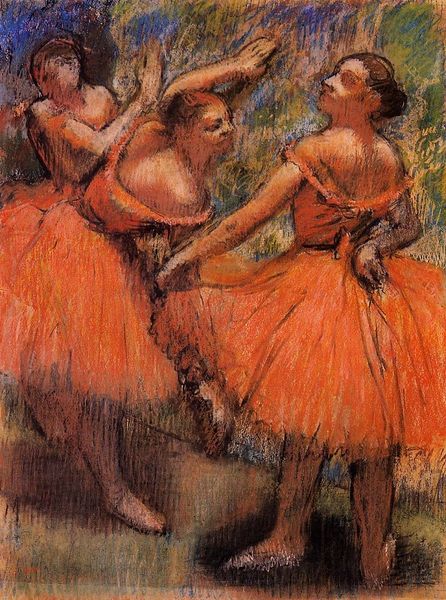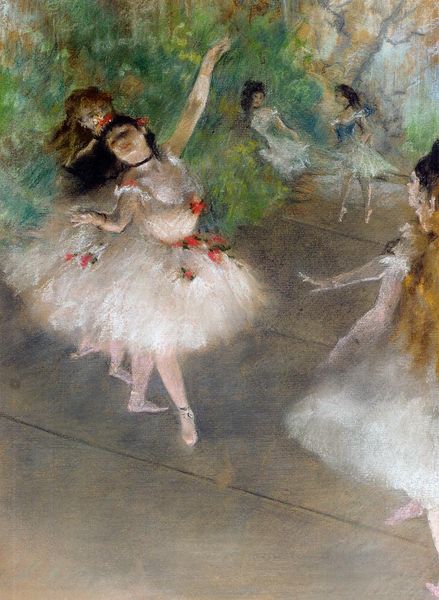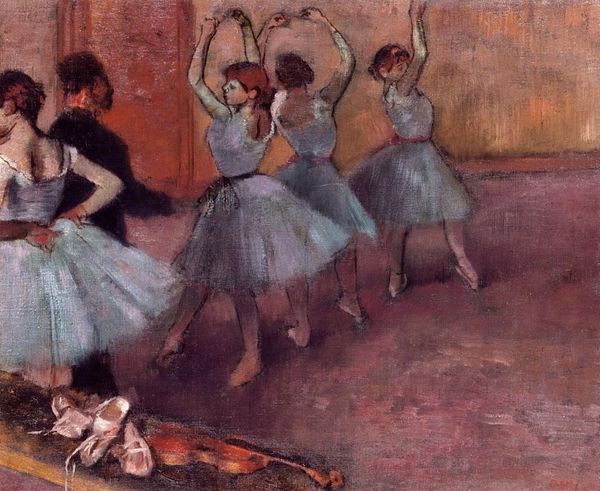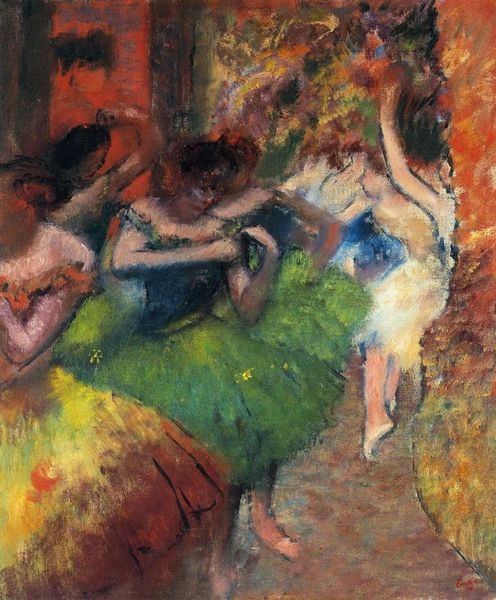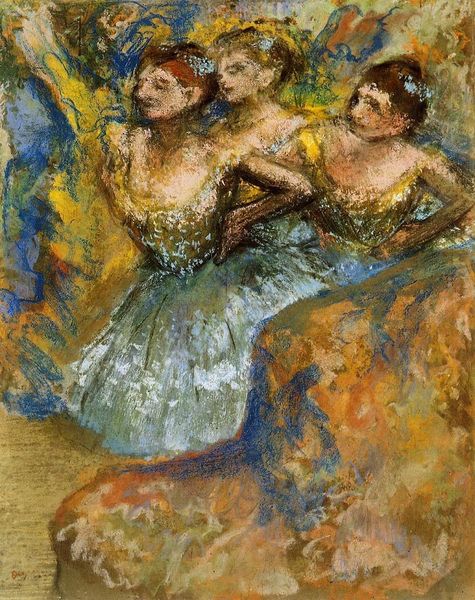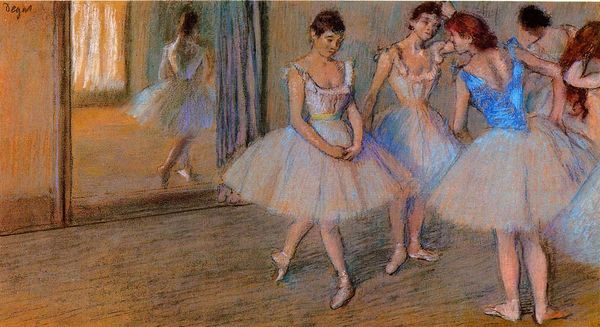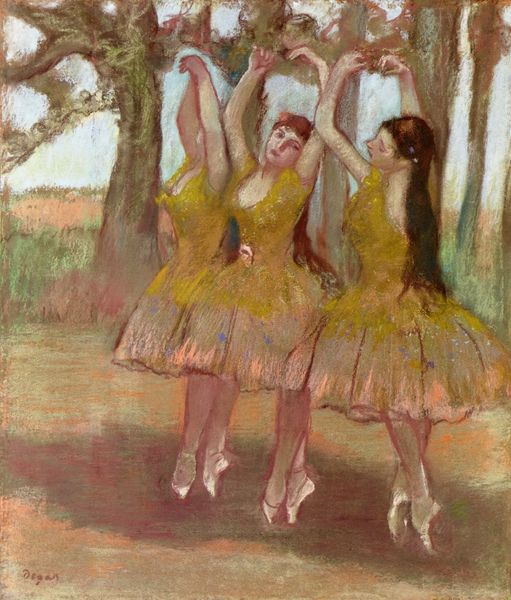
Copyright: Public domain
Editor: Here we have Edgar Degas' "Three Dancers" from 1893. It looks like it's made of pastel on paper. I'm immediately struck by how soft and dreamlike the whole scene feels. The colors blend into each other so well! What do you see in this piece? Curator: Oh, Degas and his dancers. For me, it's the tension between capturing a fleeting moment and the sheer amount of work required to get there that makes the image sing. Did he just whip this out in a minute, catching a momentary, natural grace? Or has he worked it, layered it, building up colors and poses like a sculptor molds clay? It’s both, you see? Editor: I do! I can see both the movement and almost a sense of timelessness. Curator: Exactly! It is funny, though, how we're drawn to this imagined backstage world. Always peering in where we maybe don't belong? Perhaps he loved that tension as well. Did you notice how the composition guides our eye, almost as if we are peeking between the dancers as if to watch with a more ‘trained’ eye. Editor: You’re right. It’s less a staged performance, and more like catching a glimpse behind the scenes, very intimate. Do you think that that makes it more contemporary feeling somehow, despite it being created in 1893? Curator: That "behind the scenes" viewpoint is quite deliberate, and makes the image strikingly fresh and candid. These ladies, we observe them in a way very different from earlier, posed and powdered portraits, as though we caught a natural moment in movement. That contributes to the piece’s surprisingly modern vibe. What are you taking away from it all? Editor: The sense of immediacy, even though it’s clearly meticulously crafted. I feel like I understand Degas a bit more, if that makes sense! Curator: It does! Maybe now, you're looking behind *my* scenes.
Comments
No comments
Be the first to comment and join the conversation on the ultimate creative platform.
